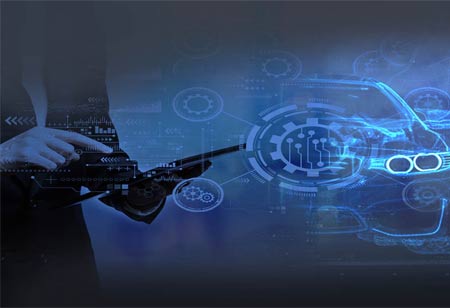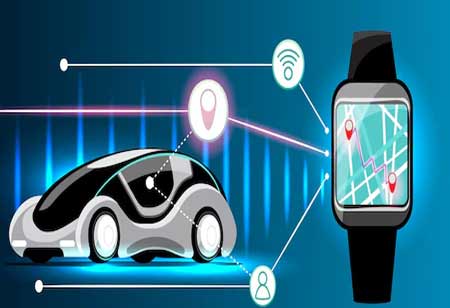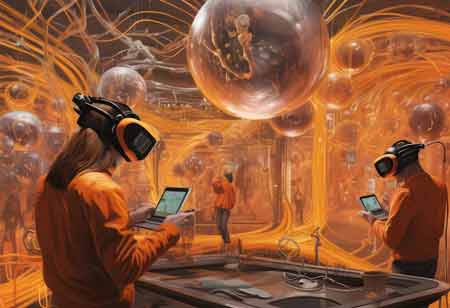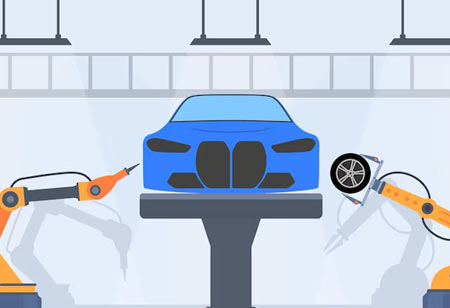THANK YOU FOR SUBSCRIBING
THANK YOU FOR SUBSCRIBING
Be first to read the latest tech news, Industry Leader's Insights, and CIO interviews of medium and large enterprises exclusively from Auto Tech Outlook

By
Auto Tech Outlook | Saturday, March 18, 2023
Stay ahead of the industry with exclusive feature stories on the top companies, expert insights and the latest news delivered straight to your inbox. Subscribe today.
ChatGPT has demonstrated the ability of machines to learn human knowledge to an unprecedented degree, while also showcasing the performance enhancements of large-parameter models like GPT-3. However, expectations and speculations when it comes to new technology must always be balanced with security and safety considerations.
FREMONT, CA: The introduction of ChatGPT has prompted a review of artificial intelligence within the industry and increased awareness of the lack of human-computer interaction in automobiles among new energy vehicles (NEVs), which pursue intelligence. Many automobile manufacturers are still being criticised for maintaining the same level of car-machine contact as they did ten years ago. Through the use of ChatGPT, vehicles may communicate with the driver verbally and via text, giving them information on the vehicle's state, the driver's location, and other things in real time. As a result, the driver can interact with the car more effectively and enjoy driving more. By analysing driver behaviour data, ChatGPT can also assist drivers in better understanding their driving behaviour and provide targeted driving advice, hence enhancing driving safety.
ChatGPT's use for autonomous driving is highly debated in the industry. Some individuals assume that the development of autonomous vehicles will increase the need for graphics, image, and data processing capabilities. They also think that the development of image algorithms will be more important than natural language processing. Hence, ChatGPT's current contribution to the development of autonomous driving is little. Some, however, think that AI-based intelligent driving will have more potent capabilities as in-vehicle technology, satellites, networks, and other devices gain in arithmetic power. The emergence of ChatGPT offers the general public a hint of potential. With training, autonomous driving using AI should become a reality in a few years.
AI Chatbots like ChatGPT could be utilised to provide more meaningful customer engagement as automotive shopping moves more and more online. Here, it may offer precise information and recommendations based on client history and tastes rather than making customers sift through hundreds of car possibilities. It might also aid in the tailoring of insurance and finance packages, make payment procedures easier, and accelerate the car-selection process for customers. Moreover, AI solutions like ChatGPT would enable consistently excellent and consistent customer service standards.
Additional benefits include being accessible around the clock and having the capacity to handle fluctuating customer service demand. Handling many of the more common operations would present the possibility of increased operational efficiencies for businesses in the automobile industry. Escalation to human customer service personnel in such circumstances would only take place when more complicated issues needed to be resolved.
AI tools like ChatGPT would improve safety measures inside vehicles. For instance, ChatGPT's sophisticated conversational skills would enable drivers to maintain concentration on their primary task of driving while effectively responding to a variety of driver inquiries. The interactions would be more straightforward thanks to its connection with the car's infotainment system, improving both vehicle safety and the driving experience as a whole.
One of the defining characteristics of AI has been its capacity to quickly process and evaluate data and then cohesively link together many data sources. Vehicles have a variety of sensors, including lidars, radars, and cameras, which together produce data. Here, artificial intelligence (AI) might quickly synthesise sensor data to give drivers useful insights, warning them of potential traffic/road risks, and enabling them to take proactive action. With further technology advancements, this capability might serve as the foundation for intelligent, secure self-driving vehicles.
Similarly, AI-driven accident alerting/reporting functions could aid in determining culpability for auto insurance companies as well as speed up the response time of emergency rescue teams. Accurate damage assessment could also be a benefit of ChatGPT for auto maintenance and repair businesses. Based on the analysis of vehicle data, it may also be possible to do predictive maintenance, which would result in significant cost savings and extend the useful life of the vehicle. ChatGPT may improve navigation in addition to enhancing safety. By utilising the conversational skills of the AI chatbot, users could more easily communicate with their car's navigation system using voice commands, eliminating the need to physically browse through a menu of location possibilities to choose their destination.
In essence, a high-quality product is not sufficient to stand out in today's competitive manufacturing climate. Instead, manufacturers need differentiators, and oftentimes, personalising the customer experience (CX) during the manufacturing process is the most economical way to achieve this. The most obvious application area for ChatGPT is personalised marketing and sales. It may enquire about the type of car a customer is looking for, their spending limit, and their preferred features. Based on this data, ChatGPT may give a selection of cars that suit the customer's specifications and provide further information about each vehicle. This can improve the consumer experience by making the purchasing process faster.
The car industry is currently in a phase of transition from fossil fuel vehicles to new energy vehicles. Predictably, ChatGPT's application scenarios in the automobile sector will develop in both breadth and depth, significantly altering the sector in the process.
 Copyright © 2025 AutoTech Outlook. All Rights Reserved | Privacy Policy | Subscribe | Sitemap | About us | Feedback Policy | Editorial Policy
Copyright © 2025 AutoTech Outlook. All Rights Reserved | Privacy Policy | Subscribe | Sitemap | About us | Feedback Policy | Editorial Policy 



